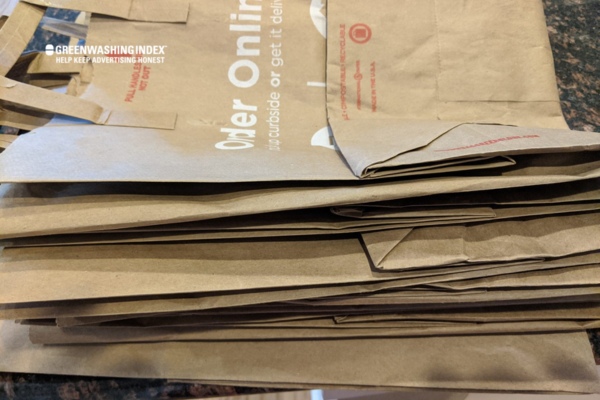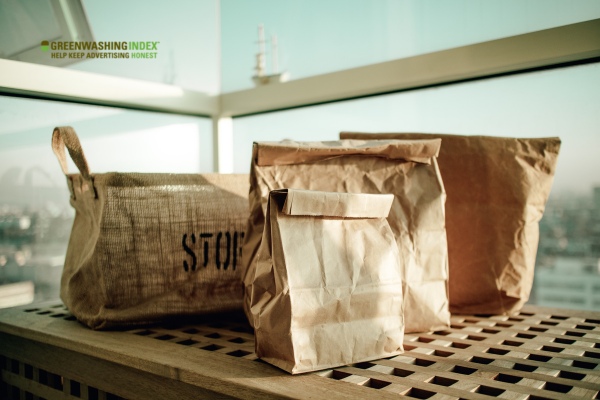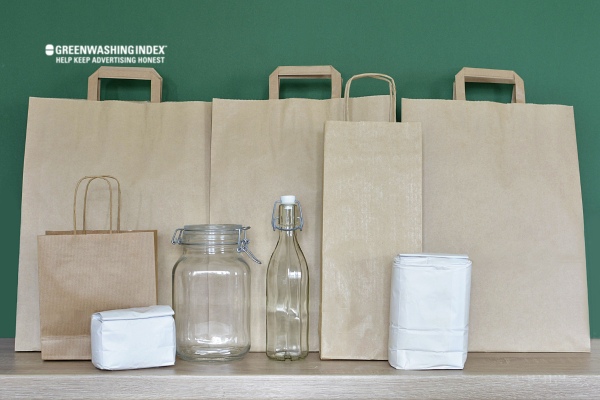

Have you recently grabbed a paper bag from your local coffee shop or grocery store and wondered about its journey after you tossed it in the recycling bin? We’re peeling back the layers of what makes paper bag recycling practices so vital for our planet.
With sustainability at the forefront of everyone’s minds, it’s more important now, than ever, to enlighten ourselves about eco-friendly alternatives and waste-reduction strategies. By understanding this, we can significantly contribute to a greener future—one paper bag at a time.
Are paper bags recyclable? Absolutely! When it comes to sustainable packaging and cutting down on environmental impact, paper bags recycle steps up as a champion.
Unlike their plastic counterparts, paper bags are made from a renewable resource and can usually go through the recycling process multiple times before reaching the end of their life cycle. This makes them stalwarts in our daily battle against waste and an ally in preserving natural resources.
What You’ll Discover Here
When I stop to think about the ins and outs of paper bag recycling, a few things immediately spring to mind. It’s a topic that seems straightforward on the surface but has a lot more layers once you start peeling them back.
The journey from the cradle to the grave for these everyday items is fascinating and holds immense importance for our environment. So, let’s roll up our sleeves and dive into understanding what recyclability really means and how those humble paper bags are given new leases of life.
First things first, let’s talk about what being recyclable entails. Being “recyclable” means an item can be processed and repurposed into either the same product or new products after its initial use has ended – kind of a revival moment for materials if you think about it! But why does this matter? Well:
Whenever I make choices as a consumer, these factors weigh heavy on my mind because I know the far-reaching impact they have on Mother Earth’s well-being.
All right then! So, how do these paper bags get recycled? Trust me; it’s simpler than trying to fold a map back right the first time around. Here’s how it typically goes down:
Stick with me here—understanding each knot in this process rope reinforces just why some might love certain glossy laminated bags (guilty!), while those aren’t particularly eco-star pupils since they complicate the recycling processes described above.
And there we have it folks—a whirlwind tour through recycling wonderland! Remember though, adopting eco-friendly alternatives isn’t just about feeling good today; it’s about carving out pathways towards sustainable habits for future generations who’ve got dibs on enjoying this planet too!
When we dive into the world of recycling, we quickly learn that not all materials are created equal. The recyclability of paper bags, a staple in retail and grocery stores, hinges on several factors. Let’s break down these factors into chewable bites so you can understand just what goes into making a paper bag recycle-ready.

By paying attention to these basic traits: thickness, type, and cleanliness, you’re looking at your humble paper bag’s passport to rebirth.
Remember:
Now let’s talk about what’s on your bag—not in some deep philosophical sense—but quite literally: inks and finishes.
Here’s what you need to know to keep your fingers on the pulse:
By understanding how different printing methods and additional materials impact a paper bag’s ability to turn over a new leaf through recycling – well gosh-darnit – you’re already helping our planet!
Keep those eyes peeled for environmentally friendlier choices when picking out your next move with sustainable packaging options because every small step contributes towards giant leaps for packaging sustainability!
As we dive into the universe of recycling, particularly for paper bags, we find ourselves entangled in a web of environmental, and economic implications and a few sticky challenges.

But here’s the lowdown: doing the recycling routine with our paper pals isn’t just good for Mother Earth; it has its perks and peccadillos for our wallets too.
Let’s rap about why recycling these grocery totes is like high-fiving the environment:
Alright, now let’s switch gears.
Cha-ching! We’ve got some dollar signs to consider when businesses switcheroo to recyclable packaging:
Hold your horses though; we’re not outta the woods yet.
Recycling paper bags isn’t always rainbows & butterflies due to some hiccups:
We’re talking about baby steps toward one colossal leap for mankind here—recycling ain’t perfect but it sure beats turning our blue marble into one big garbage patch!
Maximizing the use and recycling of paper bags is essential for environmental conservation. Not only does it involve reducing waste and saving resources, but it also requires a bit of creativity and community effort. Let’s dive into some practical ways we can make the most out of our paper bags.

Before you toss that paper bag in the recycle bin, consider the various ways you might give it a new life. Here are some creative ideas:
Get creative with those bags — there’s plenty they can do before meeting their recycled fate!
To ensure that your used paper bag is recycled properly, familiarize yourself with local recycling programs. This doesn’t just mean knowing where to drop off recyclables; it includes understanding what materials are accepted:
Moreover, participating in educational workshops provided by such programs can help you learn more about waste reduction strategies and packaging sustainability efforts. So get involved — every small action contributes towards a larger goal.
Almost all paper bags can be recycled, but their recyclability can vary depending on the type of paper and additional materials used. Laminated or treated paper bags may not be accepted in some recycling programs.
If recycling isn’t an option locally, consider reusing paper bags for storage, gift wrapping, or trash bin liners. You can also compost them if they’re not coated with plastic or chemicals.
Materials like plastic lamination, metal handles, or heavy-duty adhesives can hinder the recyclability of paper bags. Inks and dyes may also pose challenges unless they are labeled as eco-friendly or soy-based.
Understanding how paper bags recycle isn’t just environmentally savvy; it’s essential for our global well-being. As we face the challenges of waste reduction and seek sustainable packaging solutions, the insights on paper bag recycling benefits and limitations draw a clear picture: we can make a significant difference with small changes in our daily habits.
The journey doesn’t end at the recycling bin; it’s about rethinking our choices, picking eco-friendly alternatives whenever possible, and supporting local efforts that boost recycling rates.
Key Takeaway Points

Don't let aphids, slugs, and caterpillars ruin another plant. Take back control with simple, natural methods that actually work.